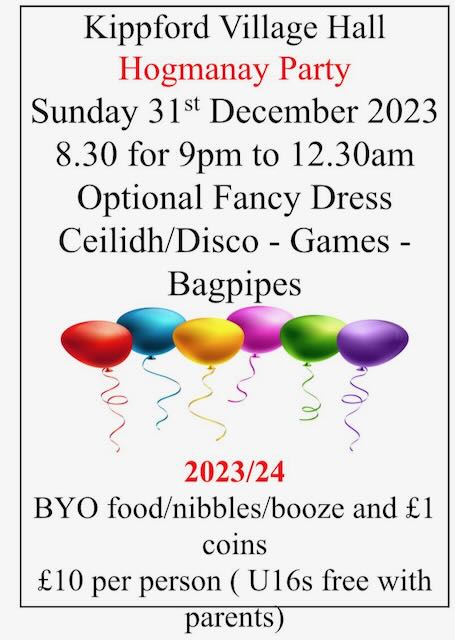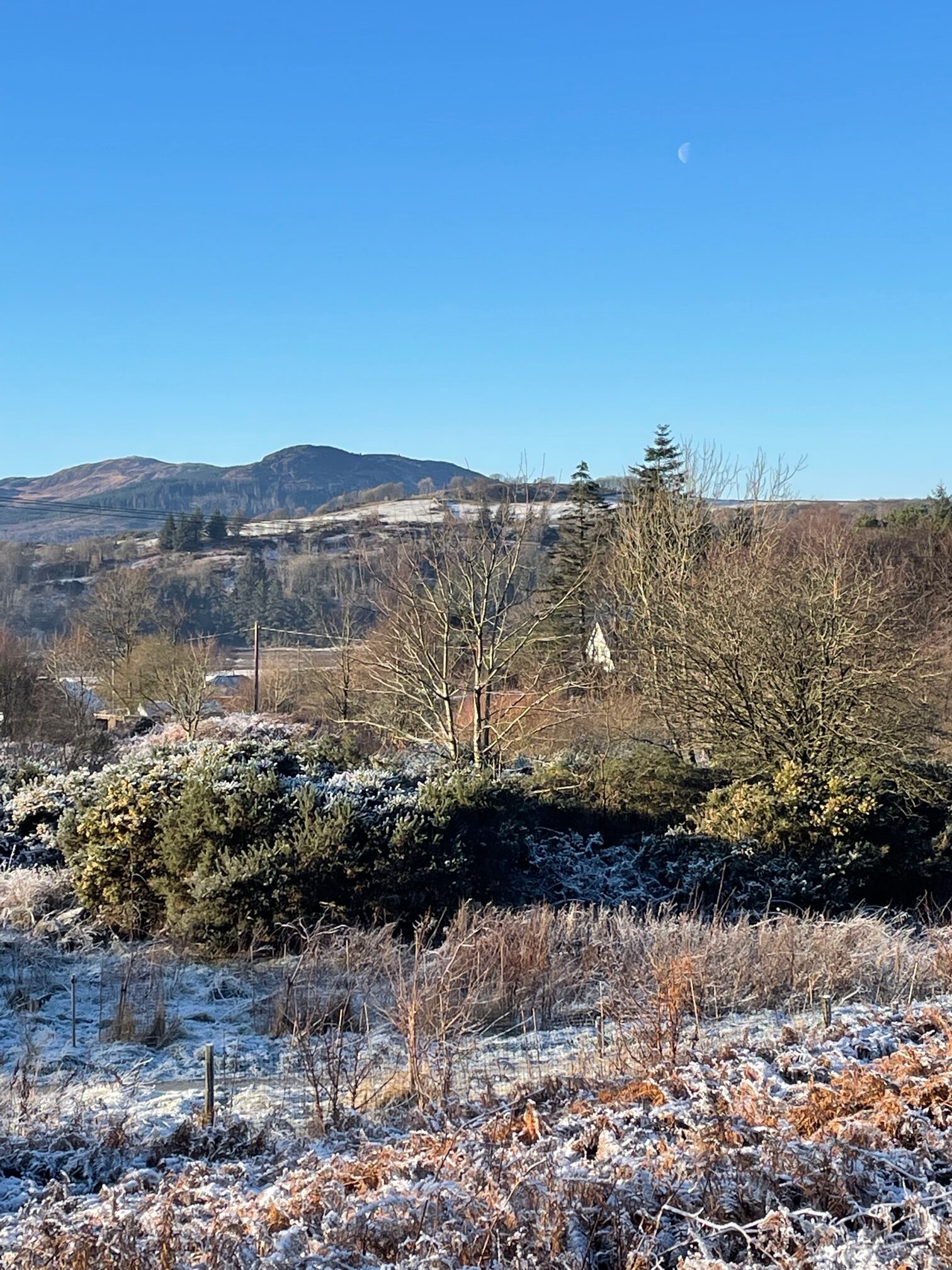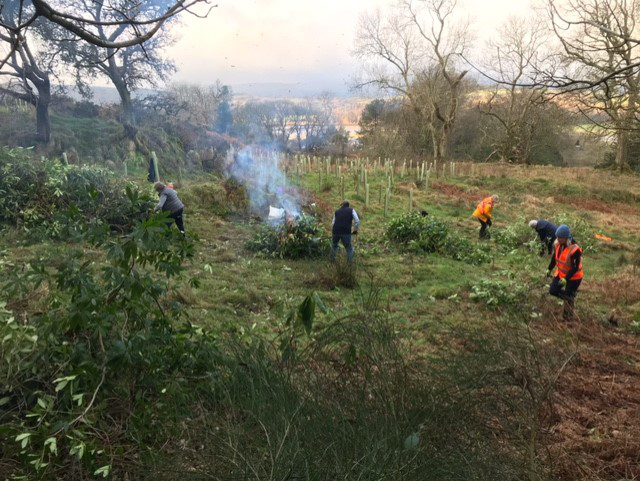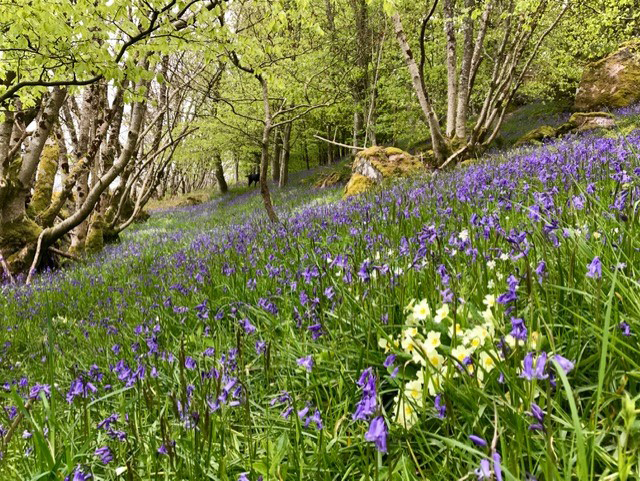An Early History
History of Kippford
Historic records of Kippford are sparse, however we are building a detailed history of Kippford from a variety of information including archives, historic records, local knowledge and previous village research.
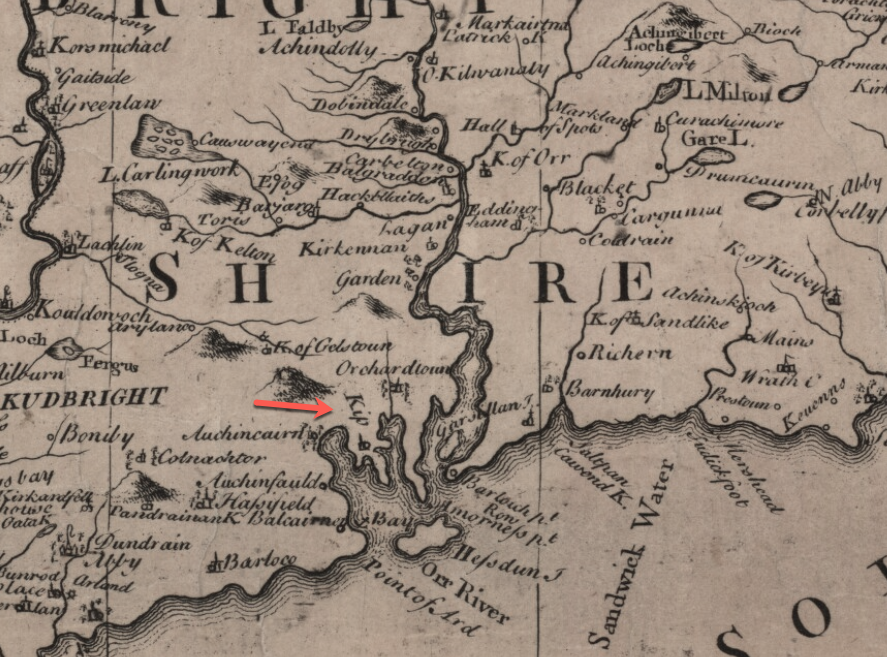
Kippford 1750. (Reproduced with the permission of the National Library of Scotland)
Formally known as Scaur
Maps
There is little on record about the earliest years of Kippford. Historic maps show the village by its old title of Scaur — Scots for a bare place on a hill.
It is not shown on Timothy Pont’s Map of Galloway of 1654 (which does show the neighbouring settlement of Barnbarroch). There is no reference to it in the map of 1725 by Herman Moll (which shows ‘Dalbete’). The first known mention of Kippford is on a map from 1750, where the area of ‘Kip’ is mentioned. This possibly refers to the land at the top of Kippford, once owned by the major landowner of the time (at Kipp House). Scaur later became Kippford.
It is thought the earliest cottages date from the first half of the 18th century and there is a record of land being sold and bought on Rough Firth as far back as 1715, although this is not necessarily the date of the first buildings. A footstone (no longer to be seen) on the village water pump is recorded as dated 1762 and while some cottages would have had their own wells, it seems reasonable to assume that a public supply of fresh water would have followed the earliest dwellings of fishermen, sailors and carpenters. One story, dimly remembered through generations is that the pump was paid for by public subscription, each villager paying what he could afford.
For more than a hundred years there was no road into Kippford: it ended at the foot of Kipp Hill from whence, if the tide was out, the village could be reached along a marshy beach. Victorian photographs show no sea wall before about the turn of the 19th century. At high water the village could be reached by crossing the upland fields. Nevertheless, Scaur began to attract mariners and a small boat building and ship-repairing industry started to flourish.
The First Eye Witness
The River Urr was then known as the Orr, and Richard Ayton in ‘A Voyage Round Great Britain’ refers to his arrival at the village of Cap Ford. The Scots Dictionary offers several definitions of Cap and Kip, but both words refer to a bulge or jutting point. Certainly the ford here, the best across the whole length of the river, was used at low tide from antiquity.
The house “Ford View” at the start of Rough Firth Road may give us an idea of one crossing, although there was more than one route. Older residents remember using the ford as children to visit a farm on the far side. Caution: the tide can rise rapidly and there is a lot of soft mud.
The First Travel Writer
Richard Ayton (1786-1823) visited in 1814. This is the first eye-witness account we have of Kippford. “I scrambled for a mile or two over a rocky path along the Eastern side of the Orr (original name for The River Urr) ’till I came to Cap Ford, a small village inhabited by ship-wrights who build small craft for coasters and fishermen.
Larger craft entering the Orr discharge their cargoes at this place, but sloops from fifty to one hundred tons can proceed four or five miles up river (to Palnackie and Dalbeattie). I was now in a very rude and unfrequented part of the country where a traveller was an object of some curiosity.”
Ayton goes on to describe how courteously he was treated when he enquired about breakfast and says he was given tea and oatcake in a cottage which was “the whisky shop of the village, remarkable for its cleanliness.”
It seems possible this was the precursor of The Anchor Hotel, although there is no written record of that title until much later in the 19th century. Valuation rolls for the Stewartry District which go back only as far as 1884 list the owner as Miss Agnes Donaldson and the premises are described simply as “a house and garden.” It is on record, however, that the Colvend Curlers’ Dinner (reported in the Dumfries and Galloway Standard of January 31st, 1885) was held at The Anchor… the meal “substantial, and elegantly served, while the company numbering twenty-eight thoroughly enjoyed themselves with toasts and song.”
Coastal Trade
At this period the village continued to be a prominent ship repairing centre; quite large sloops and schooners coming and going between the River Urr and the Scottish and English coastal ports. The trade was in fish, fertiliser, granite and timber, although the Urr Navigation Order of 1901 lists scores of other items in its scales for landing charges at the harbour in Palnackie, including coal and bricks, sheep at sixpence a dozen and cattle at two pence per head. :. The curlers who were revelling at The Anchor in 1885 would at least have had the benefit of a road to travel home by. Just four years previously, in 1881, the residents had taken it upon themselves to improve the access to the village — raising £300 to extend the road from the bottom of Kipp Hill along the waterfront as far as The Anchor. It provided the impetus for the building of new houses, the construction of the sea wall, and the extension of the road, by 1914, to the Rough Firth.
But access by water continued to play a major role in the village. The present public jetty on the waterfront was built in 1893, and a pier (opposite the Solway Yacht Club) was also in existence 1902. It was constructed by the Caledonian Granite Company of Liverpool, and around this time there was considerable employment at the Kipp Quarry which connected to the pier by a railway, now Quarry Road. Photographs of the old pier can still be seen (in the public bar of The Anchor and elsewhere); but in the years between the two world wars work at the quarry declined, the pier fell into disuse and was eventually demolished a few years after the 1939-45 war.
Plans to re-open the quarry in 1973 — on the grounds that it could have a further life of 30 years and create as many as 20 local jobs — had the village in uproar. Perhaps it was felt that the 20 jobs justified the blasting, the dust, and the lorries and the impact on property values and the holiday trade; at any rate the idea was abandoned and did not even reach outline planning stage.
The site of the old quarry pier now occupies, roughly, the site of the Solway Yacht Club’s pier and floating pontoons. Sailing for pleasure, rather than commerce, made its formal debut in 1904 with the founding of the Solway Sailing Club, fore-runner of the yacht club.
Scaur Becomes Kippford
The name Kippford appears to have been commonly used after the establishment of the Post Office about 1870 and was confirmed with the arrival of the telephone in the early 1920s. The number of the post office was Kippford 1. Mains water and a general electricity supply arrived in 1935, and electric street lighting along the waterfront — after much debate and argument with the local authorities — in 1987. There is still no mains gas in the village.
Kippford was already a holiday resort at the turn of the century, when according to local notes and guides, the earliest visitors were the families of sea faring folk enjoying the simple pleasures of salt air, the scenery, walking and bathing. It appears to have really taken off in the 1920s: “Kippford, above Urr Water, is one of the most charming nooks in the whole of the British coast,” — according to the London Times in 1927.
The Guide to Kippford (and Rockcliffe and other Colvend Seaside Resorts’) by Samuel Murdoch Crosbie, published ten years later, was even more lyrical, calling it “The Sunny Scaur by the Silver Solway.”
Tattered copies of this sixpenny booklet can still sometimes be found in antiquarian bookshops, priced several pounds. There was also a sort of de-luxe edition circulating around 1936/37 without advertisements, priced three shillings and sixpence. The advertisements, though, are fun. They make plain that by the mid 1930s tourism was in full swing, the village boasting of bathing, boating, golf, scenic walks, motor-runs and a corner shop lending library among its attractions.
VILLAGE LIFE
Latest News
Keep up to date with all the latest news, goings-on and events within Kippford.
To mark the 200th Year Anniversary of the RNLI local artist Louisa Birdsall has created a new artwork. These
Hogmanay Party The Kippford Village Hall Hogmanay Party is happening again this year for Kippford residents and guests.
Monday 27th November at 7pm in the Village Hall The papers for the AGM can be found by
The Kipp Nature Reserve Update Our native woodlands will be four years old next month. The amount of
The Kipp Nature Reserve Update The 4,600 trees we planted in March 2019 will soon be 3 years old. There have
Tree of the Year 2021 We did it! Our tree has won Tree of the Year 2021. It is an honour
The Kipp Nature Reserve Update I think May can be described as having been a benign month. Damp, but not too




